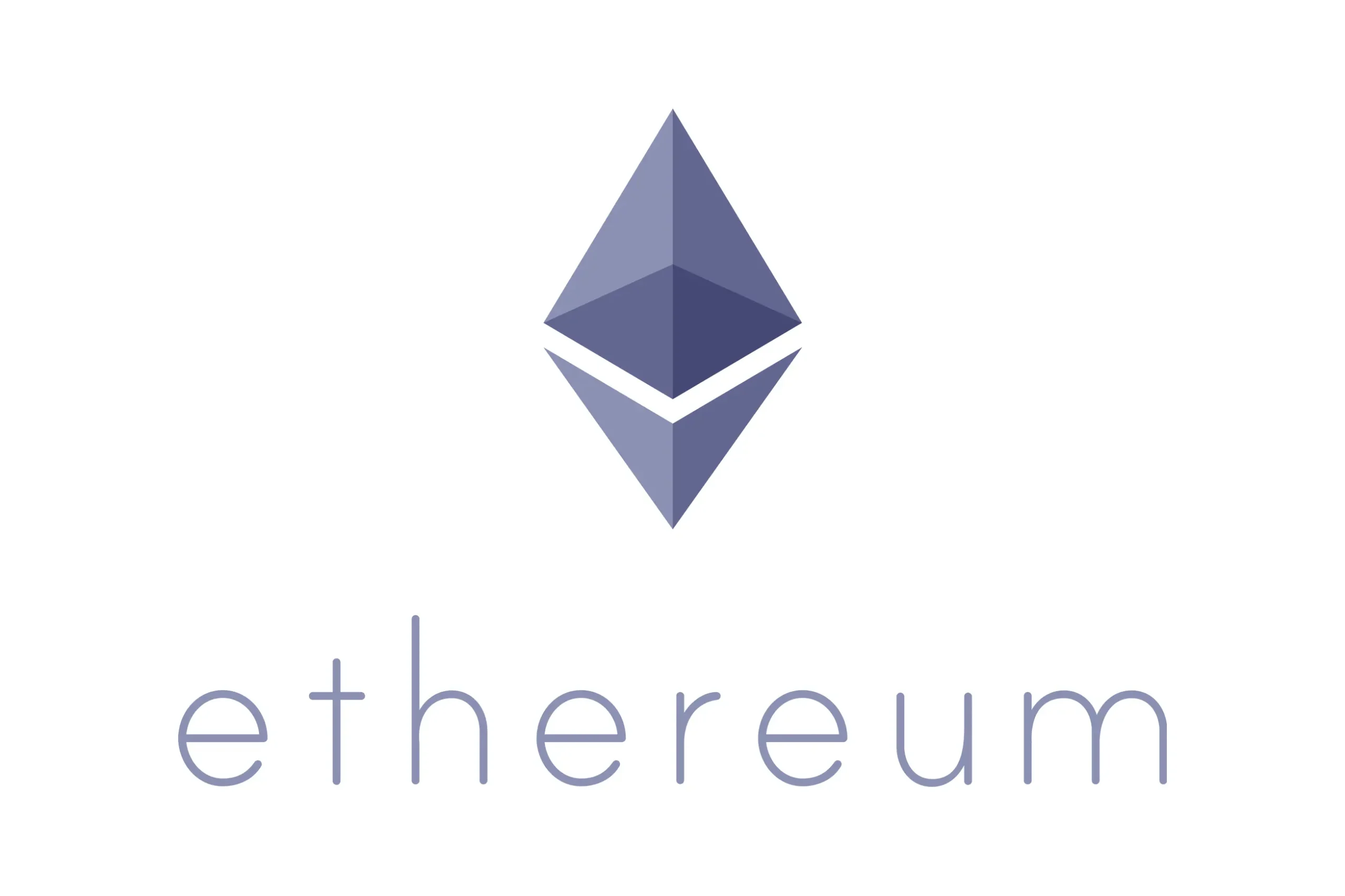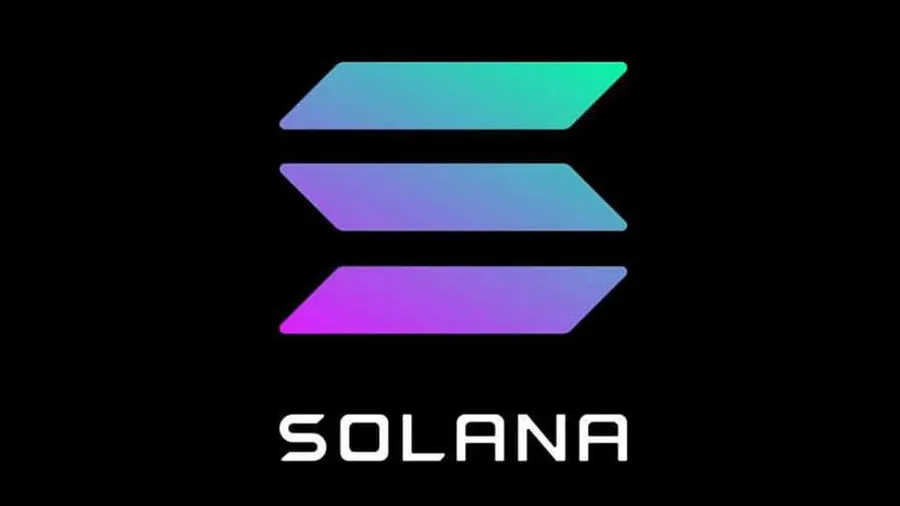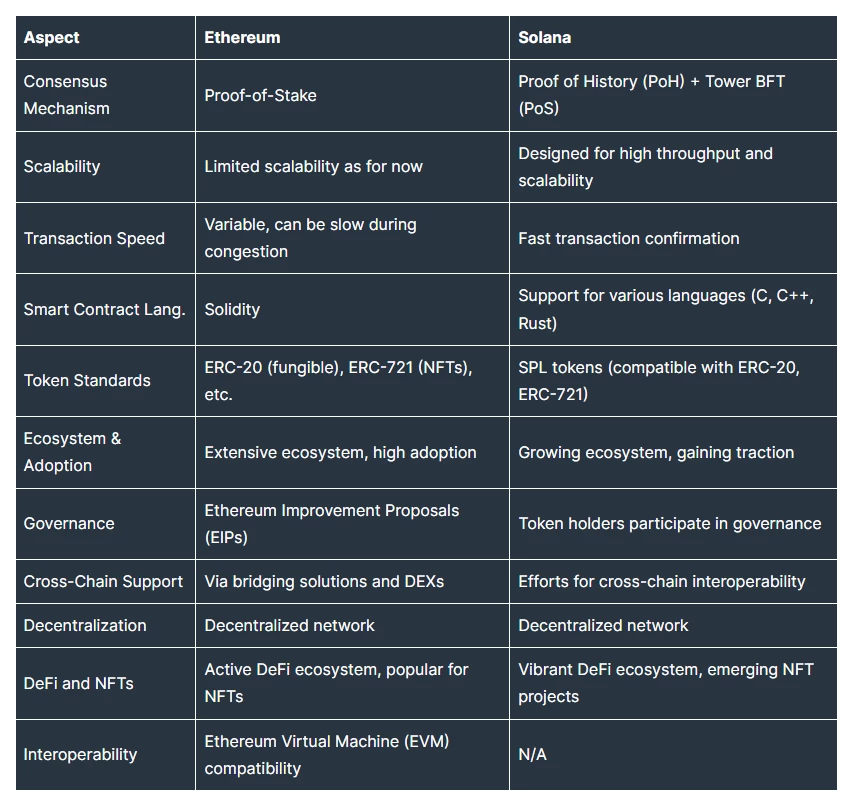Ethereum vs. Solana: With each offering unique features and functionalities, SOL and ETH have emerged as two significant actors in the rapidly evolving world of cryptocurrencies and blockchain technology. Solana presents a compelling threat to Ethereum’s established status as the top smart contract platform as it develops popularity for its high-performance capabilities and low fees. The key distinctions between Ethereum and Solana are explored in this essay. It compares their advantages and disadvantages to give readers useful information about which platform might best meet their requirements and preferences in this quickly changing digital environment.
What Is Ethereum?

Like Bitcoin, Ethereum is a decentralized blockchain platform with more features than just a basic digital money. Vitalik Buterin and the other co-founders came up with the idea in late 2013, and work got started in early 2014. Decentralized apps (dApps) and smart contracts can be created and deployed using the platform. Smart contracts enable trustless and transparent interactions between parties since they are self-executing contracts whose terms are explicitly encoded into code.
Ether (ETH), the native cryptocurrency of Ethereum, serves as a form of payment for computational services on the network as well as a medium of exchange for transactions. The Ethereum ecosystem depends on ether to run smart contracts and motivate miners to protect the network.
Due to its potential to transform a number of industries, including finance, supply chains, gaming, and more, the platform has attracted a lot of attention. Numerous decentralized applications, such as non-fungible token (NFT) marketplaces, decentralized exchanges (DEXs), and decentralized finance (DeFi) protocols, have arisen as a result of its robust and wide-ranging ecosystem.
What Is Solana?

Anatoly Yakovenko unveiled Solana, a high-performance blockchain platform, in 2020. It tries to overcome the scalability problems Ethereum and other blockchain networks experience. To achieve unmatched transaction speeds and throughput, Solana’s architecture integrates cutting-edge technologies including a proof-of-history (PoH) consensus mechanism and a tower Byzantine Fault Tolerance (BFT) consensus model.
The native cryptocurrency of Solana is known as SOL. It functions as the network’s utility token and may be staked, used for transaction fees, and utilized to access decentralized applications on the platform.
The project has drawn attention for its capacity to manage thousands of transactions per second (TPS) at reasonable costs, making it especially ideal for applications that need high speed and real-time data processing. Solana is now a well-liked option for decentralized exchanges, high-frequency trading applications, and other projects with high scalability requirements as a result of this.
Both Ethereum and Solana have distinctive advantages and support various use cases in the blockchain industry, which helps to continue the variety and expansion of the decentralized technology ecosystem.
Solana vs Ethereum – Key Differences Between ETH and SOL
Ethereum and Solana are two prominent blockchain platforms, each with its features and characteristics.
Consensus Mechanism
- Ethereum: Ethereum operated on a Proof of Work (PoW) consensus mechanism. However, after the transition to Ethereum 2.0 and The Merge, the network has begun using a Proof of Stake (PoS) consensus mechanism to improve scalability and reduce energy consumption.
- Solana: Solana employs a unique consensus mechanism called Proof of History (PoH) combined with a PoS consensus called Tower BFT (Byzantine Fault Tolerance). This architecture aims to achieve high throughput and fast confirmation times.
Scalability
- Ethereum: Ethereum faces scalability challenges, resulting in higher transaction fees and slower confirmation times during periods of network congestion.
- Solana: Solana is designed to be highly scalable, utilizing its unique consensus mechanism and a network of validators to achieve high throughput. It aims to process thousands of transactions per second.
Transaction Speed and Fees
- Ethereum: Ethereum has faced scalability issues, leading to higher transaction fees and longer confirmation times.
- Solana: Solana’s architecture is optimized for high performance, and it’s low fees and fast transaction confirmation times make it attractive for developers and users alike.
Smart Contract Languages
- Ethereum: Ethereum uses Solidity as its primary programming language for writing smart contracts specifically designed for Ethereum.
- Solana: Solana supports a wide range of programming languages, making it more flexible for developers. It allows the use of popular languages like C, C++, and Rust, making it easier for developers to build on the platform.
Ecosystem and Adoption
- Ethereum: Ethereum has a diverse, well-established ecosystem with numerous decentralized applications (dApps), DeFi projects, and NFT platforms. It has gained substantial adoption in the blockchain space.
- Solana: While Solana’s ecosystem is rapidly growing, it might not have the same level of maturity and adoption as Ethereum. However, its speed and scalability features have gained significant attention and traction.
Governance
- Ethereum: Ethereum governance is evolving, with discussions around decisions and upgrades among the core developers and community stakeholders.
- Solana: Solana’s governance involves token holders who can participate in decisions through staking and voting on proposals.
Token Standard
- Ethereum: Ethereum’s ERC-20 token standard is widely used for creating fungible tokens, and ERC-721 for non-fungible tokens (NFTs).
- Solana: Solana uses SPL (Solana Program Library) token standards for fungible and non-fungible tokens, which are compatible with Ethereum’s token standards.
It’s important to note that both Ethereum and Solana have their strengths and weaknesses, and the choice between them depends on the specific use case, development requirements, and the current state of the platforms.
Ethereum and Solana – Similarities
Ethereum and Solana are blockchain platforms that share several similarities, despite their fundamental differences. Here are the main similarities between Ethereum and Solana:
- Smart Contract Functionality – Ethereum and Solana are smart contract platforms, allowing developers to create and deploy decentralized applications (dApps) on their networks. Smart contracts on both platforms enable self-executing code that can facilitate various processes, including financial transactions, token creation, and complex logic execution.
- Decentralization – Ethereum and Solana are decentralized networks, meaning they do not rely on a central authority to process transactions or execute smart contracts. Both platforms utilize consensus mechanisms to validate and secure transactions through the agreement of network participants.
- Token Standards – Both Ethereum and Solana support the creation of tokens using standardized token protocols. Ethereum has ERC-20 for fungible tokens and ERC-721 for non-fungible tokens (NFTs). Solana uses SPL (Solana Program Library) token standards compatible with Ethereum.
- Developer-Friendly Environments – Both platforms provide tools and resources to facilitate application development. Ethereum offers a range of developer tools and libraries, including Remix, Truffle, and web3.js. Solana provides a developer-friendly environment with Solana Studio and various SDKs in popular programming languages like C, C++, and Rust.
- Cross-Chain Interoperability – Ethereum and Solana are part of the broader blockchain ecosystem, which means there are efforts to achieve cross-chain interoperability between ETH and SOL, and other blockchain networks. Projects and protocols like bridging solutions and decentralized exchanges (DEXs) aim to facilitate token transfers and interactions between Ethereum and Solana.
- Decentralized Finance (DeFi) and NFTs – Ethereum, and Solana have vibrant DeFi ecosystems, with numerous decentralized finance protocols and applications offering lending, borrowing, yield farming, and more. Both platforms also host NFT marketplaces and projects where unique digital assets can be bought, sold, and traded.
- Community and Adoption – Ethereum and Solana have strong and active developer communities. Both platforms have attracted significant attention and adoption, with many projects and users participating in their ecosystems.
It’s essential to consider that while Ethereum and Solana share these similarities, they have unique features and characteristics that make them suitable for different use cases and applications. The choice between the two depends on specific project requirements, scalability needs, and the level of adoption and support within their respective communities.
SOL vs. ETH Table Comparison

Ethereum vs Solana – Highest Price Ever – ATH
Both Ethereum and Solana have distinctive advantages and support various use cases in the blockchain industry, which helps to continue the variety and expansion of the decentralized technology ecosystem.
In contrast, Solana, an emerging star in the blockchain industry, rose dramatically in 2021. In September 2021, it reached its all-time high, rising to over $215 USD each SOL token. The revolutionary scalability and transaction speed method used by Solana, which draws investors, developers, and decentralized application projects to its ecosystem, is responsible for the platform’s outstanding performance.
The ATH values of Ethereum and Solana represented key turning points in the ongoing struggle for blockchain supremacy, igniting interest and enthusiasm in the cryptocurrency community.
Summary
We emphasized the main contrasts and parallels between Ethereum and Solana. It examines their governance, cross-chain interoperability, smart contract languages, token standards, scalability, transaction speeds, and consensus processes.
Decentralized networks that support smart contracts, DeFi, and NFTs include Ethereum and Solana. Solana uses PoH and Tower BFT for high throughput while Ethereum runs on PoS; Ethereum’s huge ecosystem and popularity contrast with Solana’s quickly expanding traction.

FAQ About Solana vs. Ethereum
Ethereum vs Solana – Which One Is Better?
The response is based on certain use cases and requirements. While Solana offers great throughput and minimal transaction fees, Ethereum has a well-established ecosystem and widespread use. Select the platform that best suits the requirements of your project.
ETH vs SOL – Is It Worth to Invest?
It entails risks, just like any investment. Both Ethereum and Solana have seen significant growth, but prior to making investment decisions, it is crucial to do your homework and understand the basics of each platform.
What Is the Main Difference Between Ethereum and Solana?
Their approaches to scalability and consensus methods are where they diverge most. While Solana employs PoH and Tower BFT for quick transaction times and large throughput, Ethereum runs on the PoS model.
How Are Ethereum and Solana Similar?
Both Ethereum and Solana are platforms for smart contracts that support NFTs, DeFi, and decentralized applications. Additionally, they provide token production utilizing standardized protocols, encouraging vibrant developer communities and piqueing interest across the board.


